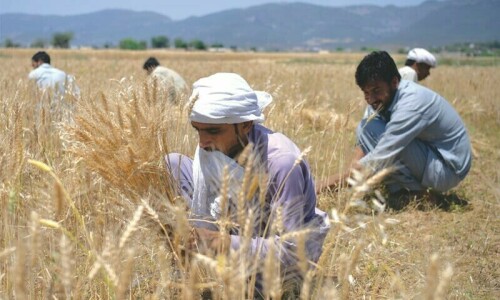
“Water is the driving force of nature,” these golden words were spoken by one of the most creative people to have walked on earth, Leonardo Da Vinci.
Imagining life without water is like imagining a tree without roots. The essence of water is known to even those creatures who cannot speak. Humans, who presume themselves as the lords of this planet, too, can’t live without water for more than three days. If we unfold the pages of history, it won’t be surprising to find that ancient civilisations always settled near rivers or coasts.
An example can be taken of the famous Indus Valley Civilisation, which was located in the vicinity of the basins of Indus River in Pakistan and along a system of mostly monsoon-fed land.
From generating electricity in hydro-electric power plants to making clothes in textiles industries, water is also important for agriculture which is the backbone for a country like Pakistan. The Greeks considered water as one of the four elements of nature used to create living things, which can reinvigorate almost anything as most people acknowledge the fact that the rhythm of water flowing is soothing.
It is of vital importance, both socially and economically, to ensure the distribution of water all across the country. Many people don’t have access to clean water, so they survive by drinking contaminated water which can cause sickness, even death, as some people can’t afford hospital and healthcare facilities.
In katchi abadis or slums, sewerage water ponds in the streets are quite frequent, which encourage the growth of mosquitoes, leading to the spread of malaria and dengue.
In deserted areas of Pakistan, such as Thar, where water is available only in small quantity, people have to travel long distances to get water from wells and springs. So having access to clean water is crucial for the survival of all living things.
In many residential areas of Pakistan’s big cities like Karachi and Lahore, people suffer from scarcity of water through the water supply lines and are forced to turn to buying water through the tanker mafia. Moreover, it’s totally impossible to rely on the dams as overusing the water of rivers can cause serious threat to rare aquatic animals, such as the blind dolphin of River Indus.
Unfortunately, it is projected that by 2050, Pakistan’s population might rise to 380 million and thus the need for water will definitely rise proportionally, underlining the fact that Pakistan is one of the few Asian countries under water scarcity threat by the next few years.
If both the government and the people are willing to, then a proper water pipeline can be set up in Thar and Karan Desert, and people would not have to walk miles every day just to get water in the heat. Apart from that, the katchi abadis require a proper hygienic environment, which the government must ensure in order to reduce the spread of life threatening diseases.
Moving on towards the urban areas of the city, strict measures should be taken against the corrupt system of tanker mafia, as they take thousands of rupees from the hardworking middle-class. An act to abolish bribery and working on improving the system of water lines can help improve the water supply to a great extent.
We can further improve the agricultural part of the country consisting of mainly Punjab, Sind and KPK, drip irrigation and terrace farming can be used to irrigate fields, except rice fields, of course. In fact, the list does not end here, there are numerous other methods to solve this water issue as a whole.
By taking inspiration from the United Arab Emirates, a desalination plant can be set up in Karachi’s or Gawadar’s coast. All it does is that it uses a separation technique, known as distillation, to remove salt from sea water, converting it into fresh drinking water. If we want to push the efficiency of this method to its limits, we can use that salt to sprinkle it in the clouds using a plane to make them laden with water to create artificial rain. We can further collect this rain in the dams we have built so far. This will not only increase water supply, but also increase hydro power generation and lower the sea level, thus reducing flood threats.
It is obvious that these projects may cost a fortune, but if we can build huge and expensive dams then, why not focus more effectively on other solutions too!
Published in Dawn, Young World, September 17th, 2022














































Dear visitor, the comments section is undergoing an overhaul and will return soon.